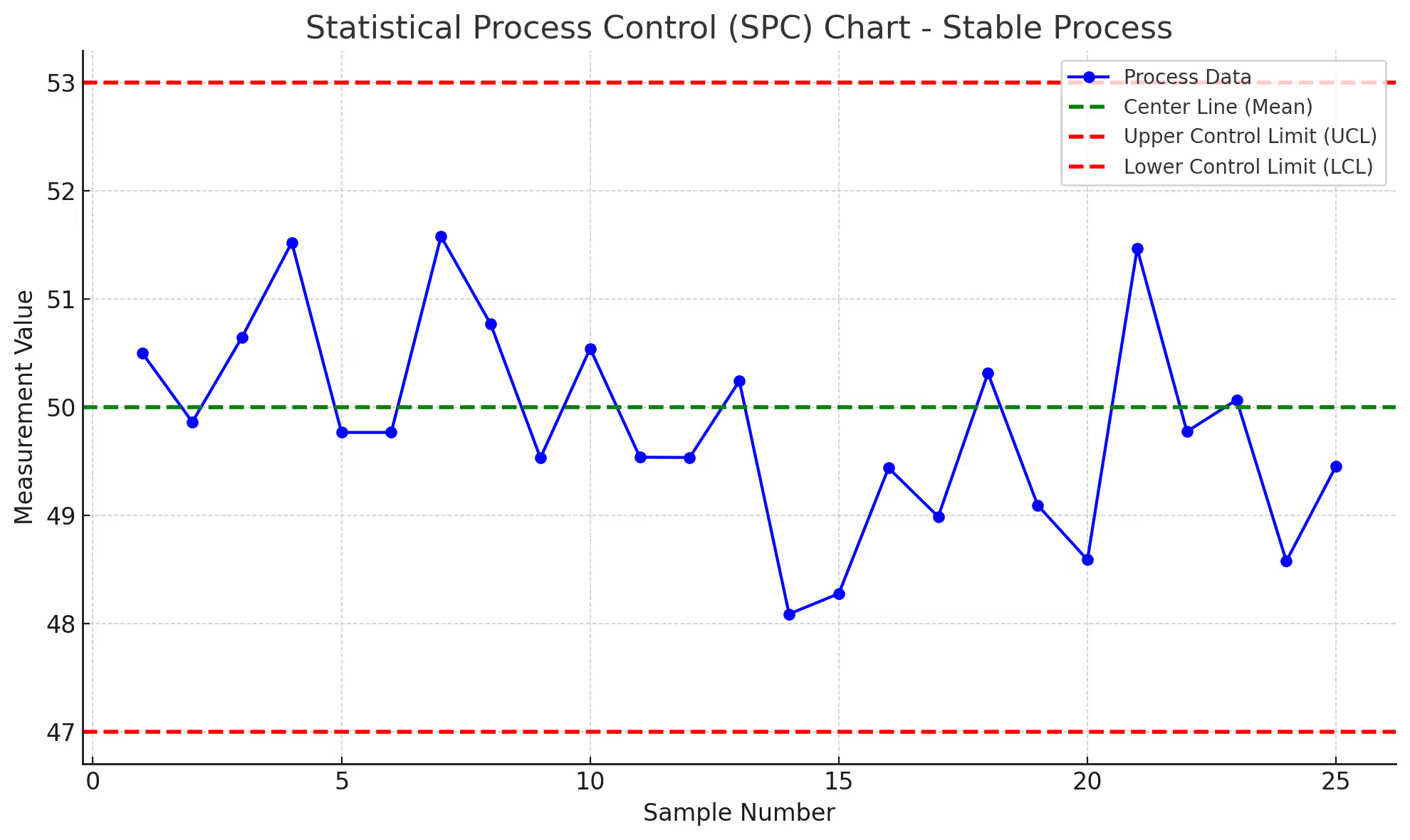🎯 Quick Answer
What: 80% of operational improvement and lean six sigma initiatives fail due to consultant dependency, poor change management, training without application, and metric manipulation rather than real change.
Why It Matters: Organizations waste millions on failed lean six sigma improvements and change management programs that could transform operations if implemented correctly.
How to Apply: Follow the Implementation Reality Framework: Foundation Building → Targeted Pilots → Systematic Expansion → Sustainment Architecture over 18-24 months with strong middle management engagement.
Expected Results: Organizations achieve 70% higher success rates with lean six sigma improvements sustained beyond 24 months versus typical 3-6 month regression when change management fails.
The Conference Room Disconnect
Picture this scene.
A conference room packed with executives, consultants, and project champions. Six months earlier, they'd launched a $3.2 million lean six sigma operational excellence initiative across their refinery network.
The PowerPoint deck showed green lights everywhere. Training completed. Tools deployed. Teams formed.
Yet production efficiency had actually decreased by 4%.
This scene plays out with remarkable consistency across oil platforms implementing lean six sigma, hospital systems attempting change management, and manufacturing plants deploying improvement projects. After witnessing hundreds of improvement projects across three continents and three decades, the pattern becomes undeniable.
Roughly 80% of operational improvement and lean six sigma initiatives fail to deliver their promised results.
The McKinsey Global Survey validates this field observation, reporting that only 23% of organizations sustain improvements beyond the first year. Change management failure is the primary cause.
📊 The Reality: The difference between success and failure isn't found in the lean six sigma methodology chosen or the consultants hired. It lies in understanding implementation reality versus implementation theory, and engaging middle management effectively.
The Universal Failure Pattern in Lean Six Sigma
Healthcare: The Three-Month Miracle That Wasn't
A regional hospital system launched a comprehensive lean six sigma patient safety initiative targeting hospital-acquired infections.
Initial results from their change management program looked spectacular:
52% reduction in central line infections within 90 days
Leadership declared victory over the change management challenge
The lean six sigma methodology was sound
The metrics were improving
Eighteen months later?
Infection rates had crept back to within 5% of baseline. The lean six sigma project failed.
What happened? The initial improvements came from heightened awareness and temporary resource allocation, not sustainable change management. Extra nurses monitored compliance. Quality teams conducted daily rounds. Leadership attended improvement meetings. Middle management wasn't truly engaged.
When attention shifted to the next crisis (staffing shortages, in this case), the old patterns reasserted themselves. Classic change management failure.
Oil & Gas: The Safety Program Paradox
An offshore drilling contractor implemented a behavior-based lean six sigma safety program across their fleet:
Investment: $4.8 million in change management
Coverage: Entire fleet with lean six sigma training
Year One results: 67% incident reduction
Year Three told a different story.
Not only had incident rates returned to pre-program levels, but workforce cynicism about lean six sigma initiatives had actually increased. Workers now viewed safety programs as "flavor of the month" change management exercises. Middle management had never truly bought in.
⚠️ Industry Pattern: Dramatic initial improvements from lean six sigma followed by complete regression within 24-36 months when change management and middle management engagement fail.
Manufacturing: The Mirage of Quick Wins
A semiconductor fabrication facility achieved stunning results fast with lean six sigma:
Month 3: 30% reduction in defect rates from lean six sigma tools
Month 4: Executives celebrated change management success
Month 5: Bonuses distributed to middle management
Month 6: Lean six sigma consulting team moved on
Month 9?
Defect rates had returned to baseline. Some production lines were actually performing worse than before the lean six sigma intervention.
The temporary gains had come from increased attention and resources, not from sustainable change management or genuine middle management commitment. When the spotlight moved, so did the improvements.
Why Traditional Lean Six Sigma Implementation Approaches Fail
The Consultant Dependency Trap in Change Management
Most organizations hire external lean six sigma expertise to drive improvement initiatives and manage change.
These lean six sigma consultants bring:
✅ Frameworks and lean six sigma templates
✅ Success stories from other companies' change management
✅ Impressive lean six sigma credentials
What they can't bring:
❌ Institutional knowledge of your specific operation
❌ Understanding of middle management dynamics
❌ Long-term change management ownership
Field observation across lean six sigma industries shows a consistent pattern:
| Timeline | What Happens in Lean Six Sigma Projects |
|---|---|
| Months 1-3 | Consultants drive visible lean six sigma activity |
| Months 4-6 | Some improvements appear, middle management complies |
| Months 7-9 | Consultants transition out, change management weakens |
| Months 10-12 | Improvements begin fading, middle management disengages |
| Month 18 | Complete regression to baseline, lean six sigma fails |
The Training Illusion in Lean Six Sigma
Organizations love lean six sigma training metrics.
"We've trained 500 employees in lean six sigma principles!" "All middle management completed change management certification!"
Sounds impressive in quarterly reports. But lean six sigma training without application is merely expensive education.
Real example from a petroleum refinery's lean six sigma deployment:
Trained: 100% of workforce in lean six sigma and root cause analysis
Cost: $1.2 million for change management training
Six months later: Less than 15% could apply the lean six sigma methodology
Middle management engagement: Near zero
Why? The lean six sigma training focused on theory and tools, not on the messy reality of investigating actual failures while managing production pressures. Change management training ignored middle management's real concerns.
The Metric Manipulation Game in Lean Six Sigma
💡 Universal Truth: What gets measured in lean six sigma gets managed. What gets managed in change management gets manipulated.
A hospital system focused on reducing patient falls using lean six sigma:
Created elaborate lean six sigma reporting systems
Held daily change management reviews with middle management
Reported 40% reduction in falls
The reality?
Staff had simply changed how they classified incidents:
Patient slipped but caught by nurse? Not counted in lean six sigma metrics
Fall in the parking lot? Outside lean six sigma project scope
Stumble without injury? Near miss, not fall
The actual fall rate hadn't changed. Only the reported lean six sigma numbers had improved. Middle management knew but stayed silent.
The 20% That Succeed: Common Lean Six Sigma Patterns
Pattern 1: Middle Management as the Lean Six Sigma Engine
Successful lean six sigma implementations share one consistent characteristic.
Not senior leadership speeches about change management.
Not frontline worker lean six sigma enthusiasm.
Middle management commitment to both lean six sigma and change management.
Why? Middle management is the translation layer between lean six sigma strategy and execution.
Middle management controls:
Resource allocation for lean six sigma projects
Which change management initiatives get attention vs lip service
How lean six sigma work actually gets prioritized daily
The unofficial communication channels about change management
📌 Reality Check: Senior leadership can launch a lean six sigma initiative. Frontline workers can embrace change management. But if middle management doesn't own it, it dies within six months.
Lean Six Sigma Success Example:
A chemical plant achieved lasting lean six sigma improvements by having middle management (plant supervisors and department managers) lead every improvement team. No external consultants ran lean six sigma meetings. No senior executives swooped in with change management solutions.
Middle management owned both the lean six sigma problems and the solutions.
Pattern 2: Solving Real Problems Workers Face with Lean Six Sigma
The successful 20% use lean six sigma to focus on problems that frustrate workers daily, with middle management identifying the issues.
Not abstract lean six sigma metrics that matter only in boardrooms.
| Industry | What Failed in Lean Six Sigma | What Succeeded with Change Management |
|---|---|---|
| Healthcare | Reducing length of stay metrics via lean six sigma | Fixing supply availability nurses and middle management complained about |
| Oil & Gas | Culture change programs without middle management | Fixing broken handrails using lean six sigma tools |
| Manufacturing | OEE improvement via lean six sigma mandates | Eliminating daily equipment issues middle management faced |
Once workers saw the organization using lean six sigma to solve their real problems, with middle management leading, they engaged fully in broader change management improvements.
Pattern 3: Building Lean Six Sigma Capability Before Complexity
Organizations in the successful 20% build fundamental lean six sigma capabilities first, starting with middle management.
The lean six sigma progression that works:
Phase 1: Basic lean six sigma problem-solving for middle management
Define problems clearly using lean six sigma language
Collect relevant data
Test simple solutions
Measure results
Phase 2: Intermediate lean six sigma tools with middle management leading
Process mapping
Root cause analysis
Simple lean six sigma statistics
Change management basics
Phase 3: Advanced lean six sigma methodologies
Full lean six sigma toolkit
Statistical analysis
Design of experiments
Complex change management
Research from the Eindhoven University of Technology confirms that middle managers play a critical role in continuous improvement by implementing leadership's strategy and driving small, daily changes.
The Implementation Reality Framework for Lean Six Sigma
Based on patterns observed across successful lean six sigma implementations, here's what actually works for change management.
Phase 1: Foundation Building for Lean Six Sigma (Months 1-3)
Focus: Create conditions for lean six sigma success before launching visible change management improvements.
Critical Actions:
Map the real power structure focusing on middle management
Identify middle management lean six sigma champions
Document how work actually happens before lean six sigma
Establish manipulation-proof baseline metrics for change management
Build basic lean six sigma problem-solving skills in middle management
Success Indicators:
Middle management requesting lean six sigma involvement
Workers identifying solvable problems for lean six sigma
Baseline data everyone trusts for change management
Fatal Mistakes:
Launching lean six sigma training programs without middle management input
Announcing transformation initiatives bypassing middle management
Bringing in armies of lean six sigma consultants
✅ Pattern Recognition: Organizations that nail Phase 1 with middle management have 3x higher lean six sigma success rates.
Phase 2: Targeted Lean Six Sigma Pilots (Months 4-9)
Focus: Demonstrate lean six sigma value through focused victories led by middle management.
Critical Actions:
Select problems middle management and workers actually care about
Run lean six sigma pilots with internal resources only
Let middle management lead change management solutions
Communicate through operational channels
Build lean six sigma success stories from real results
Success Indicators:
Voluntary lean six sigma adoption in non-pilot areas
Middle management championing change management
Improvements sustaining beyond 90 days
Fatal Mistakes:
Picking lean six sigma projects for ROI potential alone
Having consultants lead pilots instead of middle management
Celebrating change management success too early
Phase 3: Systematic Lean Six Sigma Expansion (Months 10-18)
Focus: Scale what works in lean six sigma, abandon what doesn't, with middle management driving decisions.
This is where most lean six sigma and change management efforts fail. They try to scale everything, including the failures.
Critical Actions:
Replicate only proven lean six sigma approaches
Develop internal middle management coaches
Integrate lean six sigma into operational rhythms
Build cross-functional change management connections
Document real lean six sigma practices (not theoretical ones)
Success Indicators:
Lean six sigma improvements sustaining without external support
Cross-pollination between departments via middle management
Middle management driving lean six sigma expansion
Fatal Mistakes:
Forcing unsuccessful lean six sigma approaches
Moving too fast without middle management readiness
Losing focus on change management sustainment
Phase 4: Lean Six Sigma Sustainment Architecture (Months 19-24)
Focus: Embed lean six sigma improvements into organizational DNA through middle management.
This phase determines whether your lean six sigma and change management efforts join the 20% or regress with the 80%.
Critical Actions:
Build lean six sigma into middle management job descriptions
Modify reward systems for change management success
Create lean six sigma operational review rhythms
Develop internal lean six sigma certification led by middle management
Transfer complete change management ownership to operations
Success Indicators:
Lean six sigma improvements surviving leadership changes
New employees learning "this is how we do lean six sigma"
Continuous improvement without formal lean six sigma programs
Middle management teaching change management
Fatal Mistakes:
Declaring lean six sigma victory
Removing change management support too early
Moving past lean six sigma to the next initiative
The Uncomfortable Truth About Lean Six Sigma Timelines
Research on organizational attention spans reveals sobering reality for lean six sigma and change management:
📊 The Lean Six Sigma Attention Gap:
Typical organizational attention span: 3.2 months
Required for lasting lean six sigma change: 18-24 months
The gap: 15-21 months of sustained change management effort after attention wanes
This mismatch explains more lean six sigma failures than any methodology deficiency.
How the successful 20% bridge this gap in lean six sigma:
They don't have longer attention spans. They build lean six sigma work into operational rhythms through middle management rather than treating it as a separate change management initiative.
| Traditional Lean Six Sigma Approach | Successful Change Management Approach |
|---|---|
| Special lean six sigma meetings | Part of operational reviews run by middle management |
| Separate lean six sigma metrics | Integrated into operational KPIs |
| Project-based lean six sigma structure | Continuous flow of improvements via middle management |
| External lean six sigma ownership | Middle management operational ownership |
| Initiative mindset | "How we work" mindset embedded by middle management |
Critical Success Factors Most Lean Six Sigma Organizations Miss
The Middle Management Reality in Change Management
What middle management faces daily during lean six sigma deployments:
Overloaded with operational demands beyond lean six sigma
Measured on short-term results, not change management
Skeptical of lean six sigma initiatives creating more work
Protective of their teams' capacity for change management
How successful lean six sigma organizations respond:
They don't ignore middle management reality. They work with it.
Tactical approaches for middle management engagement:
Remove before adding: Eliminate tasks before adding lean six sigma work
Change metrics: Measure middle management on change management participation
Grant authority: Give middle management real power to make lean six sigma changes
Protect time: Create untouchable lean six sigma hours for middle management
The Knowledge Transfer Challenge in Lean Six Sigma
The lean six sigma knowledge evaporation timeline without middle management:
Month 1: Consultants have all the lean six sigma knowledge
Month 6: Some knowledge transferred to change management champions
Month 12: Champions promoted, middle management uninformed
Month 18: Lean six sigma knowledge completely evaporated
How to prevent lean six sigma knowledge evaporation:
Document lean six sigma decisions AND rationales with middle management
Create middle management teaching responsibilities
Rotate middle management through lean six sigma roles
Build redundancy in critical change management areas
The Resource Reality for Lean Six Sigma
Every organization claims resources are available for lean six sigma and change management.
Few actually provide them when operational pressures mount on middle management.
💡 Pattern Recognition: Organizations that dedicate resources for lean six sigma with middle management control achieve 5x better results than those using "available as needed" resources.
Lean six sigma resource strategies that work:
Dedicated people reporting to middle management who can't be redirected
Lean six sigma budgets controlled by middle management
Protected time for change management that operations can't claim
Middle management acceptance of short-term impacts
Industry-Specific Lean Six Sigma Implementation Realities
Healthcare: The Lean Six Sigma Complexity Challenge
Unique healthcare lean six sigma and change management challenges:
24/7 operations limiting middle management availability
Multiple professional hierarchies competing for lean six sigma resources
Regulatory requirements constraining change management options
Shift work complicating lean six sigma communication
✅ Lean Six Sigma Success Pattern: Healthcare implementations succeed when physician champions partner with middle management operational leaders. Clinical credibility plus middle management authority equals sustainable change management.
What works for healthcare lean six sigma:
Frame everything through patient safety first using lean six sigma data
Engage physicians and middle management as design partners
Build lean six sigma changes into clinical protocols
Use shift huddles led by middle management for reinforcement
Oil & Gas: The Lean Six Sigma Safety-First Paradox
Unique oil & gas lean six sigma challenges:
Safety concerns overshadowing lean six sigma efficiency improvements
Geographic distribution complicating change management
Contractor workforces lacking lean six sigma commitment
Boom-bust cycles disrupting middle management stability
✅ Lean Six Sigma Success Pattern: Frame all lean six sigma improvements through safety benefits first, efficiency second. Engage middle management as safety champions using lean six sigma tools.
What works for oil & gas lean six sigma:
Lead with safety metrics from lean six sigma, follow with efficiency
Build lean six sigma requirements into contractor agreements via middle management
Use permit-to-work systems for lean six sigma standardization
Create location-independent change management methods
Manufacturing: The Lean Six Sigma Technical Trap
Unique manufacturing lean six sigma challenges:
Over-reliance on technical lean six sigma solutions
Underestimating change management cultural requirements
Assuming shop floor lean six sigma compliance
Middle management focusing on automation over process
✅ Lean Six Sigma Success Pattern: Engage technical middle management as lean six sigma problem solvers, not solution implementers. When middle management designs improvements, adoption follows naturally.
What works for manufacturing lean six sigma:
Start with process before lean six sigma technology
Engage operators through middle management in solution design
Build lean six sigma improvements into equipment protocols
Use visual management for change management sustainment
The Lean Six Sigma Investment Reality Check
The Change Management Conversation That Needs to Happen
Traditional lean six sigma pitch to leadership:
"This lean six sigma program will deliver $5M in savings within 12 months with only $500K investment."
Reality-based lean six sigma and change management conversation:
"This lean six sigma initiative requires:
18-24 months of sustained change management effort
Significant middle management time for lean six sigma
Temporary operational impacts during change management
Real resource dedication to lean six sigma
Based on our organizational realities, expect meaningful lean six sigma results in Year 2, with change management sustainability dependent on maintaining middle management focus beyond initial excitement."
The second conversation is harder.
It's also more likely to succeed.
Your Lean Six Sigma Implementation Reality Assessment
Before launching your next lean six sigma or change management initiative, honestly assess:
1. Middle Management Readiness for Lean Six Sigma
Capacity for additional lean six sigma work exists
Genuine change management engagement, not just compliance
Will champion lean six sigma when attention shifts
Have real authority to make change management decisions
2. Organizational Attention Span for Lean Six Sigma
Last three initiatives maintained focus >12 months
No major competing priorities to lean six sigma
Can sustain 18-24 months change management effort
Leadership committed to lean six sigma beyond announcement
3. Internal Lean Six Sigma Capability
Can succeed without lean six sigma consultants after Month 6
Problem-solving skills in middle management
Lean six sigma knowledge documented and transferable
Internal change management coaches developed
4. Resource Commitment to Lean Six Sigma
Dedicated resources for change management, not "as available"
Protected from operational pressures on middle management
Lean six sigma budget survives business cycles
Time allocation for middle management is real
Scoring:
12-16 checked: Ready for successful lean six sigma implementation
8-11 checked: Address change management gaps first
<8 checked: Build lean six sigma foundation with middle management
Frequently Asked Questions
Why do most lean six sigma improvement projects fail within the first year?
Most lean six sigma projects fail because organizations focus on methodology deployment rather than capability building and change management. They train people in lean six sigma tools without addressing the organizational realities that prevent tool usage. Success requires building internal problem-solving capabilities, engaging middle management as owners, and solving real operational problems before introducing complex lean six sigma methodologies.
What's the difference between successful and failed lean six sigma implementations?
Successful lean six sigma implementations build internal expertise over 18-24 months with strong middle management engagement, while failed ones rely on external consultants for 3-6 months. The successful 20% focus on problems workers actually face, engage middle management from day one in change management, and integrate lean six sigma improvements into operational rhythms rather than treating them as separate initiatives.
How long should a realistic lean six sigma implementation take?
Realistic lean six sigma implementation requires 18-24 months minimum for lasting change management. Organizations typically lose focus after 3.2 months, but successful implementations build lean six sigma work into operational rhythms through middle management. Phase 1 (Foundation) takes 3 months, Phase 2 (Pilots) takes 6 months, Phase 3 (Expansion) takes 9 months, and Phase 4 (Sustainment) takes 6 months.
What role should consultants play in lean six sigma improvement projects?
Consultants should transfer lean six sigma knowledge, not create dependency. Successful organizations use consultants to build internal capabilities and train middle management during the first 3-6 months, then transition to internal resources. When consultants lead lean six sigma implementations beyond 6 months, improvements rarely survive their departure. The goal is internal expertise in both lean six sigma and change management, not external dependency.
How do you sustain lean six sigma improvements after initial implementation?
Sustainability requires embedding lean six sigma improvements into organizational DNA through modified job descriptions, changed reward systems for middle management, operational review rhythms, and internal lean six sigma certification programs. The critical factor is complete ownership transfer to middle management and operations before declaring success. Most organizations celebrate change management victories too early and remove support structures before lean six sigma improvements are truly embedded.
Real lean six sigma implementation takes time. Real change management results last forever.
Start with reality. Build with middle management. Succeed with persistence.
Related Reading:
External Reading:
Keywords:
project implementation, change management failure, improvement project success, operational excellence implementation, lean six sigma implementation, lean six sigma failure, lean six sigma projects, organizational change management, middle management engagement, middle management commitment, implementation framework, process improvement failure, operational transformation, continuous improvement sustainability, change resistance patterns, consultant dependency, training illusion, metric manipulation, implementation reality, sustainment architecture, pilot projects, organizational attention span, capability building









